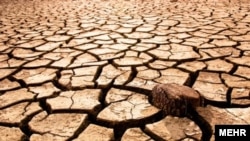A top Iranian environment official has lambasted the country’s Sixth Development Plan as detrimental to soil and water resources.
“Such plans are forced on the government without taking soil and water capacities into account,” Issa Kalantari, head of the Iranian Environment Department, said on December 11.
At a ceremony celebrating World Soil Day, he said Iran’s limited water and soil resources were endangering its ability to feed the country’s population of more than 80 million.
“Since our level of consumption has been higher than our limited resources, we are going to face soil bankruptcy as we have already experienced in water-related fields,” he said.
Excessive erosion and degrading have seriously endangered Iran’s soil resources, experts maintain.
Describing the country’s laws, including the overarching Sixth Development Plan, as unrealistic in regard to the environment, Kalantari said, “We are using our resources in excess without thinking about how to sustain them.”
The top laws of the land have forced governments to excessively build dams and consume surface and underground water resources. Meanwhile, many parts of Iran have faced unprecedented periods of drought.
According to official statistics, 750,000 wells are operational in Iran, 330,000 of which are illegal.
“Stop repeating the shibboleth and saying our country is great,” Kalantari has said against those who promote population growth, noting, “Our resources are limited. If we are going to have a larger population, we should do it in tandem with our imports.”
Supreme Leader Ayatollah Ali Khamenei is the main proponent of population growth. In 2014, he issued an edict obliging the heads of Iran’s ruling system to reduce the legal age for marriage and encourage families to have more children.
Kalantari had previously echoed other experts’ warnings, asserting, “Iran’s 8,000-year-old civilization will be destroyed if the level of our water consumption is not reduced.”
The former agriculture minister also cautioned that Iran’s soil resources have reached a tipping point requiring urgent measures.
“When the Iran-Iraq War started, no one considered the consequences of the armed conflict and its bombardments on the unemployment rate, because there was no time to do so. We were facing a much greater problem: the war itself,” Kalantari said in an interview with the government’s official news agency, IRNA. “Today, we’re in a similar situation. We must not consider the unemployment rate among farmers at this point in time, because we’re facing a much more critical problem.”
He further warned that if Iran does not change its approach to water use, the result would be mass migration.
“If water consumption for agriculture remains at this level, in less than 25 years Iran’s eastern and southern areas will be completely deserted, and 50 million people will have to emigrate,” he added.
Blaming the agricultural sector for excessively using Iran’s water resources, Kalantari said, “90 percent to 95 percent of water consumed in the agricultural sector must be reduced; otherwise, the problem will never be solved.”









